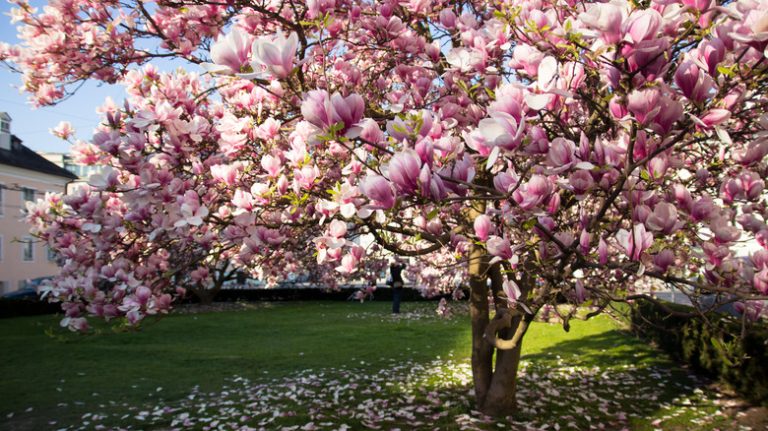Azaleas are beautiful flowering shrubs that are known for their vibrant colors and stunning blooms. These plants have been cultivated for centuries for both ornamental and agricultural reasons. Their blooming periods vary depending on the variety and the climate in which they are grown. In general, azaleas are early bloomers, often flowering in the spring months.
There are many factors that can affect when azaleas bloom. One of the main factors is the weather. Azaleas require a period of winter dormancy in order to produce buds for the following spring. If the weather is too warm or if there is a sudden change in temperature, it can cause the buds to abort, resulting in fewer blooms or no blooms at all.
Another important factor is the level of care that the azaleas receive. Proper watering, fertilizing, and pruning can all impact the blooming period of azaleas. Azaleas require well-drained soil and regular watering, especially during dry periods. Fertilizer should be applied in the early spring, before new growth begins. Pruning should be done after the azaleas have finished blooming to promote bushier growth and more blooms the following year.
It is also worth noting that different varieties of azaleas have different blooming periods. Some azaleas bloom early, while others bloom later in the season. In general, azaleas that bloom later in the year are more tolerant of heat and can withstand warmer temperatures. If you are unsure about the blooming period of your azaleas, it is best to consult a local gardening expert or the national gardening association for more information.
It is important to remember that azaleas are part of the rhododendron family, and their blooming periods can sometimes overlap. Rhododendrons and azaleas are often confused with each other, but there are some key differences between the two. Rhododendrons have larger flowers and broader foliage, while azaleas have smaller flowers and narrower foliage. Additionally, rhododendrons tend to bloom later in the season than azaleas.
In conclusion, the blooming period of azaleas can vary depending on the variety, climate, and level of care they receive. These beautiful flowers bring vibrant colors and joy to gardens and landscapes. Whether they bloom in early spring or later in the season, azaleas are sure to brighten any garden with their stunning blooms.
Plant of the Week: Rhododendron Fall Blooming Azaleas
If you are looking to add some color to your garden later in the year, then fall blooming azaleas are a great choice. Unlike their spring blooming counterparts, these azaleas start to flower in the fall, offering a burst of color when most other plants are starting to fade. In this article, we will explore the reasons why fall blooming azaleas are an interesting addition to any garden.
Blooming Periods
One of the main reasons why fall blooming azaleas are so popular is because they extend the flowering season. While most azaleas bloom in the spring, these fall bloomers start to show their flowers in September or October. This means that they will continue to provide beautiful blooms well into the fall months, when most other azaleas have already finished blooming.
In addition to their extended blooming period, fall blooming azaleas also have interesting foliage. Their leaves can turn vibrant shades of red, orange, and yellow in the fall, adding even more visual interest to your garden.
Location and Pruning
When it comes to planting fall blooming azaleas, location is key. These azaleas prefer a spot with partial shade, as too much direct sunlight can cause the flowers to fade quickly. Avoid planting them in areas that have high temperatures during the summer, as this can also affect their blooming.
Pruning is another important factor to consider when caring for fall blooming azaleas. It is best to prune these azaleas in late winter or early spring, right before they start to bloom. This will encourage new growth and ensure that the plants are ready to flower in the fall.
Pest and Frost Control
Just like other azaleas, fall blooming azaleas are susceptible to pests such as aphids and lacebugs. To prevent and control pest infestations, make sure to keep your plants well-watered and regularly inspect them for any signs of damage.
Frost can also be a concern for fall blooming azaleas, as it can damage the flowers and foliage. To protect your plants from frost, you can cover them with a frost cloth or move them to a more sheltered location.
Conclusion
Fall blooming azaleas are a wonderful addition to any garden. Their extended blooming period, interesting foliage, and vibrant flowers make them stand out among other plants. By choosing a suitable location, properly pruning, and taking steps to prevent pests and frost, you can enjoy the beauty of fall blooming azaleas in your garden for many years to come.
When Do Azaleas Bloom – Information On Azalea Blooming Periods
Azaleas are a popular and beautiful addition to any garden. They are known for their vibrant and colorful flowers, which bloom at different times throughout the year. Understanding when azaleas bloom can help you plan and care for your plants properly.
The blooming period for azaleas can vary depending on the specific variety and location. Generally, azaleas bloom in the spring, between the months of March and May. However, some varieties may bloom as early as February or as late as June.
Azaleas are also known to have a second blooming period in the fall, typically late September to October, although it is not as profuse as their spring blooms.
The length of the blooming period can also vary. Some azalea varieties may have a short blooming period of a week or less, while others can bloom for several weeks or even a month.
One reason why azaleas may have a shorter blooming period is due to the presence of pests. Pests such as aphids or lace bugs can damage the foliage and flowers, resulting in a shorter blooming period.
Another factor that can affect the blooming period is the division of azalea varieties into different groups. Some azaleas, known as evergreen azaleas, bloom in the spring, while others, known as deciduous azaleas, bloom in the late spring or early summer. Understanding which group your azaleas belong to can help you determine when they will bloom.
In addition to pests and variety, the blooming period can also be influenced by the weather. Azaleas prefer cool temperatures and thrive in locations with mild winters and frost-free springs. However, if there is a late frost or a harsh winter, the blooming period may be delayed or the flowers may fail to bloom altogether.
To ensure that your azaleas bloom at their best, it is important to provide them with proper care. This includes providing them with well-drained soil, regular watering, and the occasional application of fertilizer. Pruning your azaleas can also help promote healthy growth and abundant blooms.
In conclusion, the blooming period of azaleas can vary depending on the specific variety, location, division, and weather conditions. By understanding when your azaleas are expected to bloom, you can better prepare for their care and enjoy their beautiful flowers for as long as possible.
Sources:
National Gardener’s Association: https://www.garden.org/
Agricultural Spruce: https://www.agriculturespruce.com/
Why Aren’t My Azaleas Blooming
There can be several reasons why your azaleas fail to start blooming. Azaleas have a specific blooming period, which typically occurs in early spring, around March or April, depending on the variety and climate. If your azaleas haven’t bloomed by this time, there are a few possible explanations.
One reason could be that your azaleas have experienced a little bit of damage during the winter months. Azaleas are generally hardy plants, but extreme cold weather or frost can damage the flower buds, preventing them from blooming. Another reason might be improper pruning. Azaleas typically bloom on old wood, so if you have pruned your plants at the wrong time, you may have removed the buds for the current year’s flowers.
In some cases, azaleas may not bloom due to a lack of water or the use of high-nitrogen fertilizer. Azaleas prefer moist but well-draining soil, so make sure to water them regularly, especially during dry periods. Using a balanced fertilizer specifically formulated for azaleas can also help promote blooming.
It’s also important to note that azaleas have different blooming periods depending on the variety. Some azaleas, known as fall-blooming azaleas, bloom in the fall instead of spring. These varieties typically start blooming in late summer or early fall. If you have fall-blooming azaleas and they aren’t blooming, it might be because they are still in their foliage period and haven’t entered the blooming stage yet.
If your azaleas still won’t bloom, it’s a good idea to check for any pest or disease problems. Azaleas can be susceptible to various pests and diseases, such as lace bugs, spider mites, or powdery mildew. Treating these issues promptly can help your azaleas recover and start blooming again.
In conclusion, there are several reasons why your azaleas might not be blooming. It could be due to winter damage, improper pruning, lack of water or fertilizer, or even pest and disease problems. Understanding the specific needs of your azaleas and addressing any issues they might have can help ensure they bloom beautifully each year.
Other Reasons Azaleas Won’t Bloom
While azaleas generally bloom during specific periods in the year, there are several other factors that might prevent them from blooming. Here are some of the common reasons why azaleas may not bloom:
- Insufficient sunlight: Azaleas require a significant amount of sunlight to bloom. If they are not receiving enough sunlight, it can affect their blooming capacity.
- Poor location: Azaleas should be planted in an area with well-draining soil. If the soil is too wet or too dry, it can prevent the plants from blooming.
- Inadequate fertilizer: Azaleas need the right balance of nutrients to produce blooms. If they are not receiving proper fertilization, they may not bloom as expected.
- Damage from pests: Azaleas can be susceptible to various pests, such as lace bugs or spider mites. If these pests attack the plants, they can cause damage to the foliage and prevent blooming.
- Improper pruning: Azaleas require proper pruning to remove dead or damaged branches and encourage new growth. If they are not pruned correctly, it can hinder blooming.
- Early frost: Azaleas can be damaged by frost, especially if they start blooming early. A late frost can kill the flowers and prevent further blooming.
- Improper watering: Azaleas need consistent moisture, especially during their growing season. Over or under-watering can stress the plants and hinder blooming.
If you are experiencing issues with your azaleas not blooming, it is important to assess these factors and make the necessary adjustments. Understanding why your azaleas are not blooming can help you address the problem and ensure a more successful blooming period.




